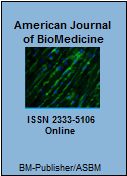Highly selective, potent inhibitors of the Src kinase paradigm are helping to unravel the functional importance of individual Src kinase isoforms, coupled with the development of new chemical probes designed for this purpose. Myocardial ischemia/reperfusion (I/R) remains an immediate therapeutic target. Inhibition of the Src kinase family, non-receptor protein tyrosine kinases normally regulated by ATP release, has been shown to lead to myocardial protection against I/R injury. The potential of Src kinase inhibition for the treatment of diseases remains to be validated. Numerous kinase inhibitors identified and examined within the last decade in a clinical research environment, predominantly in oncology, represent multi-targeted kinase inhibitors in which the primary and secondary targets are usually receptor tyrosine kinases. The considerable interest in the understanding of the functional role of the "Src family", particularly the contribution of the unique mammalian isoform, c-Yes, in influencing myocardial structure and function provides the concomitant potential to expand the drug discovery insights. Src kinase (Src) plays a key role in the regulation of normal cardiac function and in numerous diseases including myocardial infarction. Src arbitrates functional I/R-injury – in particular perturbing adrenergic signalling using inhibitors. But to achieve potent protection, Src-selective inhibitors have predominantly low micromolar IC50 estimates, targeting mostly receptor-tyrosine kinases. Highly selective "c-Yes" inhibitors have been developed for medicinal chemistry investigations as a starting point for the development of an orally bioavailable Src-selective inhibitor. In conclusion, recent developments in the medicinal chemistry of kinase inhibitors have sufficiently advanced to permit this study, in which a highly selective c-Yes inhibitor enables the first experimental elucidation of the effect of highly selective Src inhibition.
Keywords: Acute myocardial infarction; Src; Ischemia/reperfusion (I/R)
Copyright © 2020 by Takashi Akasaka et al.
-
Bain J, Arthus JS, Alessi DR, Cohen P. The selectivity of protein kinase inhibitors: a further update. Biochem. J 2007;408:297-315. [PMC free article] [PubMed]
-
Breen ME, Steffey ME, Lachacz EJ, Kwarcinski FE, Fox CC, Soellner MB. Substrate activity screening with kinases: discovery of small-molecule substrate-competitive c-Src inhibitors. Angew. Chem. Int. Ed. Engl 2014;53:7010-7013. [PMC free article] [PubMed]
-
Breen ME, Soellner MB. Small molecule substrate phosphorylation site inhibitors of protein kinases: approaches and challenges. ACS Chem. Biol 2015;10:175-189. [PMC free article] [PubMed]
-
Cox KJ, Shomin CD, Ghosh I. Tinkering outside the kinase ATP box: allosteric (type IV) and bivalent (type V) inhibitors of protein kinases. Future Med. Chem 2011;3:29-43. [PubMed]
- Slimani H, Zhai Y, Yousif NG, et al. Enhanced monocyte chemoattractant protein-1 production in aging mice exaggerates cardiac depression during endotoxemia. Critical Care 2014;18(5):527. [PubMed]
-
Gower CM, Chang ME, Maly DJ. Bivalent inhibitors of protein kinases. Crit. Rev. Biochem. Mol. Biol 2014;49:102-115. [PMC free article] [PubMed]
-
Lavogina D, Enkvist E, Uri A. Bisubstrate inhibitors of protein kinases: from principle to practical applications. ChemMedChem 2010;5:23-34. [PubMed]
-
Parang K, Till JH, Ablooglu AJ, Kohanski RA, Hubbard SR, Cole PA. Mechanism-based design of a protein kinase inhibitor. Nat. Struc. Biol 2001;8:37-41. [PubMed]
- Yousif NG, Ao L, Cleveland JC, Fullerton DA, Meng X. Aging augments myocardial inflammatory response to ischemia and reperfusion: an obligatory role of TLR4. Shock 2012;37:32-32.
-
Sciarretta S, Volpe M, Sadoshima J. Mammalian target of rapamycin signaling in cardiac physiology and disease. Circulation Research 2014;114(3):549-564. [PMC free article] [PubMed] [Cross Ref]
-
Das A, Durrant D, Koka S, Salloum FN, Xi L, Kukreja RC. Mammalian target of rapamycin (mTOR) inhibition with rapamycin improves cardiac function in type 2 diabetic mice: potential role of attenuated oxidative stress and altered contractile protein expression. Journal of Biological Chemistry 2014;289(7):4145-4160. [PMC free article] [PubMed] [Cross Ref]
- Everett WA,Yousif NG, Ao L, Cleveland JC, Fullerton DA, Meng X. Ghrelin reduces myocardial injury following global ischemia and reperfusion via suppression of myocardial inflammatory response.American journal of BioMedicine 2013;1(2),38-48. [Abstract/Full-text]
- Yousif NG, Ao L, Li J, et al. Myocardial tissue TLR4 plays a major role in mediating myocardial injury following cold ischemia and reperfusion through up-regulation of MCP-1. Journal of Surgical Research 2011;165(2):181. [Google Scholar]
-
Hausenloy DJ, Yellon DM. Myocardial ischemia-reperfusion injury: a neglected therapeutic target. Journal of Clinical Investigation 2013;123(1):92-100. [PMC free article][PubMed] [Cross Ref]
- Yousif NG, Al-amran FG. Novel Toll-like receptor-4 deficiency attenuates trastuzumab (Herceptin) induced cardiac injury in mice. BMC cardiovascular disorders 2011;11(1):62. [Abstract/Full-Text]
-
Sciarretta S, Zhai P, Shao D, et al. Rheb is a critical regulator of autophagy during myocardial ischemia: pathophysiological implications in obesity and metabolic syndrome. Circulation 2012;125(9):1134-1146. [PMC free article] [PubMed] [Cross Ref]
Who Can Become a Reviewer?
Any expert in the article's research field can become a reviewer with American Journal of Biomedicine. Editors might ask you to look at a specific aspect of an article,...
Thank you for visiting American Journal of BioMedicine. * = Required fields
Error: Contact form not found.
How to cite this article
Lewis MD, McKew JP, Neuzi KE, Akasaka T. Highly selective Src kinase inhibition protects myocardial injury after ischemia/reperfusion. American Journal of BioMedicine 2020;5(2):129-140.
Article outline
1. Abstract
2. Keywords
3. Introduction
4. Methods
5. Results
6. Discussion
7. References
Journal Metrics
Journal TOCs SpotiDoc Publons
Google Scholar CiteSeerx Crossref


